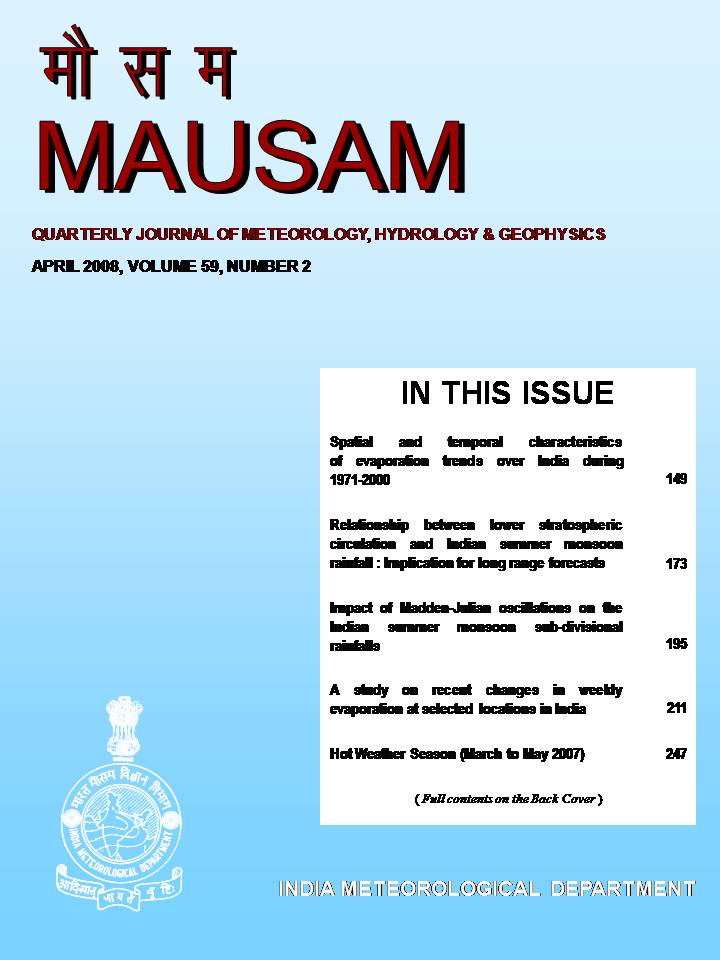A study on recent changes in weekly evaporation at selected locations in India
DOI:
https://doi.org/10.54302/mausam.v59i2.1252Keywords:
Weekly evaporation, Weekly evaporation trend, Trend analysis for evaporationAbstract
Thirty years evaporation time series data (1971-2000) recorded from US class-A evaporation pans for ten well distributed locations in India, have been utilized in the present study. For these locations, basic statistical parameters of weekly evaporation [minimum, maximum, range, mean, standard deviation (S.D.) and coefficient of variation (C.V.)] have been computed. Variations in average weekly evaporation in different weeks and at different locations have been plotted and discussed. Changes in weekly evaporation have been studied using linear trend analysis technique on weekly evaporation time series data for standard meteorological weeks (1 to 52). Graphs have been plotted, for all ten different locations, to study week wise distribution of changes in weekly evaporation trends and to identify the specific periods when significant changes occur.
The highest average weekly evaporation of 107.5 mm has been observed at Jodhpur in standard week 21(21 – 27 May). The lowest average weekly evaporation of 14.5 mm has been observed at Karimganj in standard week 3 (15 – 21 January). The peak in average weekly evaporation, at most of these locations is achieved around standard week 20 (14 – 20 May). The coefficient of variation (C.V.) at these locations varied between 18.7 and 51.8 percent. The highest C.V. of 51.8 % has been observed at Bikramganj, whereas the lowest C.V. of 18.7 % has been observed at Rajamundry. Out of 52 weeks, Pune and Rajamundry have shown significant decreasing trend in weekly evaporation in maximum number of weeks (37) and Bhubaneshwar has shown significant decreasing trend in weekly evaporation in minimum number of weeks (10). At six locations (Bikramganj, Hissar, Jodhpur, Pattambi, Pune and Rajamundry), the number of weeks showing significant decreasing trend in weekly evaporation have been found to be more than 23 weeks. At more than five locations significant decreasing trend in weekly evaporation occur, in almost all weeks, between standard weeks 1 to 19 (1 January - 13 May) and also between standard weeks 40 to 52 (1 October - 31 December). In almost all the locations, significant decreasing trend in weekly evaporation occur, in standard week numbers 1-2, 9-10, 13 and 15.
Downloads
Published
How to Cite
Issue
Section
License
Copyright (c) 2021 MAUSAM

This work is licensed under a Creative Commons Attribution-NonCommercial 4.0 International License.
All articles published by MAUSAM are licensed under the Creative Commons Attribution 4.0 International License. This permits anyone.
Anyone is free:
- To Share - to copy, distribute and transmit the work
- To Remix - to adapt the work.
Under the following conditions:
- Share - copy and redistribute the material in any medium or format
- Adapt - remix, transform, and build upon the material for any purpose, even
commercially.



